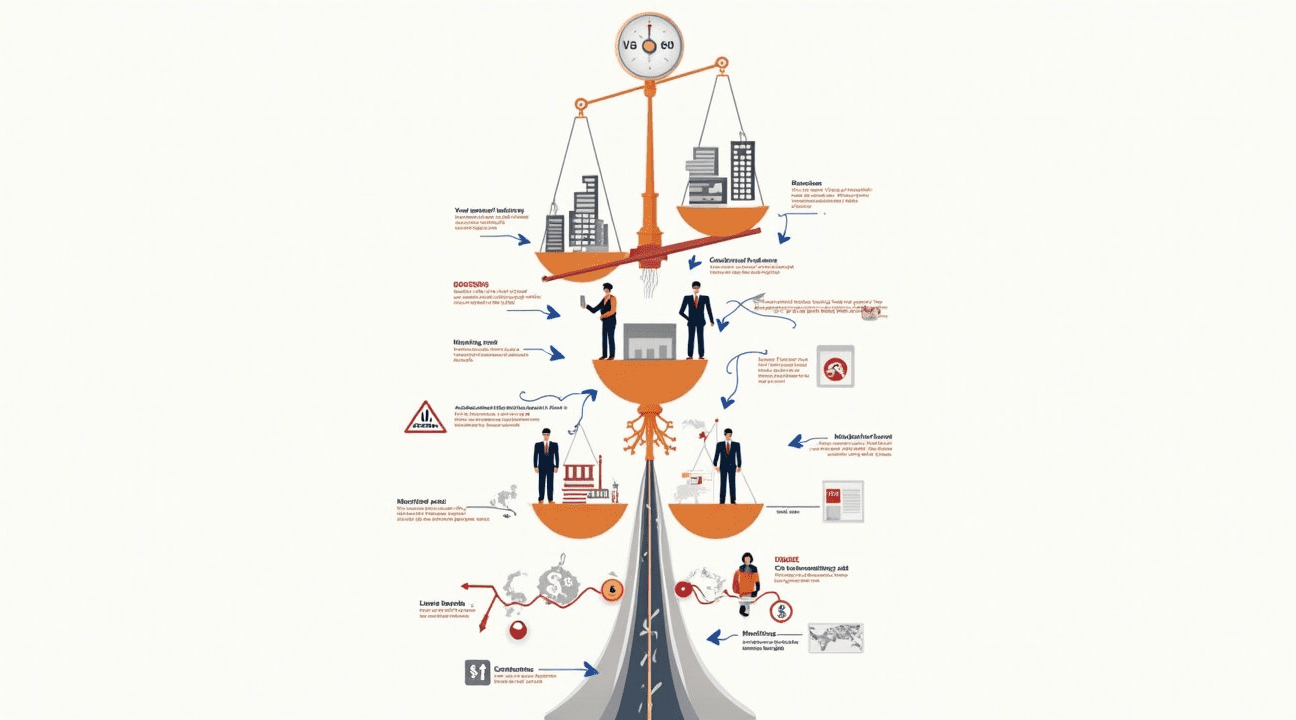Healthcare costs will surge nearly 8% in 2025, representing the steepest increase in over a decade and creating unprecedented pressure on both employers and consumers. This dramatic cost escalation, combined with evolving coverage options, government program expansions, and digital innovations, fundamentally reshapes the health insurance landscape and creates new opportunities for professionals who understand these complex market dynamics.
Key Takeaways
- Healthcare spending will jump 8% in 2025, driven by deferred care utilization, prescription drug costs, workforce shortages, and administrative complexity, while 70% of consumers report they cannot afford current healthcare costs.
- Individual Coverage Health Reimbursement Accounts (ICHRAs) grew 30% year-over-year, alongside micro-insurance options and personalized coverage models that leverage AI algorithms and IoT devices to meet evolving consumer demands.
- ACA marketplace enrollment is experiencing unprecedented growth, with major carriers like Centene achieving 28% increases in membership while Medicaid enrollment remains 22% higher than pre-pandemic levels.
- High-deductible health plans paired with HSAs are becoming the preferred cost management strategy, supported by price transparency tools that reveal dramatic variations in healthcare costs across providers.
- Regulatory pressures and market instability are creating challenges, with 35% of rated insurance groups receiving negative analyst outlooks, particularly affecting not-for-profit and geographically limited insurers.
Medical Cost Explosion: Why Healthcare Spending Will Jump 8% in 2025
Healthcare costs are accelerating at an unprecedented pace, with employer spending projected to surge nearly 8% in 2025. This represents the steepest increase in over a decade, creating significant pressure on both businesses and employees. The magnitude of this jump signals a fundamental shift in healthcare economics that I believe will reshape how organizations approach benefits planning and individual health management.
The Affordability Crisis Deepens
Seven out of ten consumers report they cannot afford current healthcare costs or would struggle to pay more if prices continue rising. This statistic reveals a troubling disconnect between healthcare pricing and financial reality for most Americans. The situation becomes more concerning when considering that hidden ways to save money often go unnoticed, particularly in healthcare spending where consumers frequently lack transparency into cost-saving opportunities.
Medical loss ratios from Q1 2025 demonstrate how insurers are grappling with increased utilization and cost pressures across the industry. Aetna CVS Health reported a medical loss ratio of 87.3%, while Elevance reached 86.4%. UnitedHealthcare posted 84.8%, and Cigna recorded 82.2%. These figures indicate that insurers are paying out substantial portions of premium dollars directly for medical care, leaving less room to absorb future cost increases without passing them on to consumers.
Market Dynamics and Enrollment Patterns
Commercial membership growth of approximately 3% from Q4 2024 suggests steady demand for private insurance coverage despite rising costs. Medicaid enrollment remained stable at around 38.2 million members, indicating that government programs continue serving as a crucial safety net. However, this stability in public program enrollment may mask underlying shifts as some individuals potentially delay transitioning to commercial coverage due to cost concerns.
Healthcare utilization patterns contribute significantly to these cost pressures. Deferred care from previous years is creating pent-up demand, while advances in medical technology and pharmaceuticals drive treatment costs higher. Specialty medications, complex procedures, and innovative treatments push per-case expenses beyond traditional projections.
I observe that chronic conditions requiring long-term management are becoming more prevalent, partly due to lifestyle factors and an aging population. Conditions requiring ongoing monitoring and treatment – from diabetes to cardiovascular disease – create sustained cost pressures that compound year over year. The integration of technology in healthcare, while improving outcomes, often comes with premium pricing that filters through to insurance costs.
Prescription drug costs remain a primary driver of healthcare inflation. New specialty medications command high prices, while even generic drugs experience periodic shortages that spike costs. Biosimilar adoption, though promising for cost control, hasn’t achieved the dramatic savings initially projected by industry analysts.
Mental health services demand has surged, creating both utilization increases and provider capacity constraints. This combination drives up per-session costs while expanding the total volume of services needed. Emergency department visits for mental health crises place additional strain on the most expensive care settings.
The healthcare workforce shortage affects costs across multiple dimensions. Provider shortages drive up compensation, which translates to higher service fees. Limited capacity also pushes patients toward more expensive care settings when preferred providers aren’t available. Rural areas face particularly acute shortages, forcing patients to travel for care or seek emergency services for non-urgent needs.
Administrative complexity adds another layer of cost escalation. Prior authorization requirements, claims processing, and regulatory compliance create overhead expenses that ultimately get factored into premium calculations. While intended to control unnecessary utilization, these processes often add administrative burden without proportional cost savings.
Healthcare facility costs continue rising due to infrastructure needs, technology investments, and staffing pressures. Hospitals face particular challenges balancing quality improvements with financial sustainability. Construction costs for new facilities and major renovations have increased substantially, creating long-term debt service obligations that factor into pricing.
Geographic variations in healthcare costs create additional complexity for employers with multi-state operations. Urban markets typically command higher prices than rural areas, while regional competition levels significantly influence local pricing dynamics.
Revolutionary Changes in Coverage Options and Consumer Demands
The health insurance landscape has transformed dramatically, driven by changing consumer expectations and technological advances. I’ve observed that 65% of consumers now express a strong desire for more personalized healthcare options, yet this same percentage finds managing their care overwhelming and time-consuming. This paradox creates unique opportunities for insurance professionals who understand how to bridge the gap between consumer needs and available solutions.
Emerging Coverage Models Reshaping the Market
Individual Coverage Health Reimbursement Accounts (ICHRAs) represent one of the most significant shifts I’ve witnessed in recent years. These arrangements experienced impressive 30% year-over-year growth, establishing themselves as viable alternatives to traditional group plans. ICHRAs offer employers flexibility while giving employees greater control over their healthcare choices.
Micro-insurance options are gaining substantial traction across multiple sectors. These innovative products provide event-specific, short-term, and on-demand coverage that extends beyond traditional health services. Coverage now includes smartphone protection and specialized health events, catering to consumers who prefer targeted, flexible solutions over comprehensive but expensive traditional plans.
The expansion extends to coverage for emerging risks that weren’t previously addressed by standard policies. Climate-related health issues have become increasingly important, with insurers now offering protection for conditions caused by wildfire smoke exposure and heat-related illnesses. This forward-thinking approach demonstrates how the industry adapts to environmental changes affecting public health.
Technology-Driven Personalization and Service Innovation
Insurers are leveraging advanced technologies to deliver the personalized experience consumers demand. AI algorithms analyze individual health patterns and risk factors to create customized policies that better match specific needs. IoT devices collect real-time health data, enabling dynamic policy adjustments and preventive care recommendations. Data analytics platforms process vast amounts of information to identify trends and predict future healthcare needs.
Telemedicine integration has revolutionized how consumers access care, making healthcare more convenient and often more affordable. I find that policies incorporating telehealth options appeal strongly to busy professionals who value efficiency. Value-added wellness programs complement these technological advances by offering preventive services, health coaching, and lifestyle management tools that help consumers stay healthier while potentially reducing claims costs.
These innovations reflect a broader shift from reactive to proactive healthcare management. Instead of simply paying for treatments after illness occurs, modern policies emphasize prevention and early intervention. Wellness tracking through wearable devices, nutrition counseling, mental health support, and even considerations about longevity-focused lifestyle choices are becoming standard features rather than premium add-ons.
The integration of holistic care options addresses the overwhelming nature of healthcare management that many consumers experience. Simplified digital interfaces, automated appointment scheduling, and AI-powered symptom checkers reduce administrative burden while improving access to care. Some insurers now offer concierge-style services that help members understand their benefits and coordinate care across multiple providers.
Smart risk assessment tools analyze factors beyond traditional medical history. Financial wellness programs recognize that economic stress affects health outcomes, while environmental risk assessments consider geographic factors like air quality and natural disaster frequency. This comprehensive approach to risk evaluation enables more accurate pricing and better coverage recommendations.
The focus on responsive care options means policies can adapt quickly to changing circumstances. Short-term coverage bridges can help during job transitions, while seasonal workers can access temporary plans that align with their employment patterns. Emergency coverage for unexpected health events provides peace of mind without the commitment of annual contracts.
I’ve noticed that successful insurance professionals now act more like healthcare consultants than traditional salespeople. They understand complex product offerings, stay current with regulatory changes, and can explain how new technologies benefit specific client situations. Mastering these evolving coverage options and consumer trends positions insurance professionals to provide genuine value in an increasingly competitive marketplace.

Government Program Shifts and Marketplace Growth Driving Industry Changes
The health insurance landscape is experiencing significant transformations as government programs reshape enrollment patterns and create new opportunities across the market. I’ve observed how these shifts are fundamentally altering the competitive dynamics among major carriers and opening doors for professionals who understand these evolving trends.
Medicaid enrollment continues to demonstrate remarkable resilience, maintaining levels approximately 22% higher than pre-pandemic figures. While this growth is stabilizing as eligibility reviews reach their conclusion, the sustained elevation represents a fundamental shift in the program’s reach and influence. This expansion has created lasting changes in how carriers approach their business models and service delivery strategies.
Marketplace Momentum Creates New Opportunities
The ACA individual marketplace is experiencing unprecedented momentum that’s creating substantial opportunities for insurance professionals. Major carriers are reporting impressive growth figures that reflect this expanding market:
- Centene achieved a remarkable 28% increase in marketplace membership during Q1 2025
- Molina has successfully grown to 5.8 million members across their marketplace offerings
- Elevance recorded an 11% growth in ACA membership, demonstrating consistent expansion
- Centene now manages a combined membership of 13 million in Medicaid and 7.9 million in Medicare Advantage
These numbers reveal more than simple growth statistics. They represent shifting market dynamics where carriers are repositioning themselves to capitalize on public-sponsored program expansion. The relief in market positioning among carriers stems directly from this expansion in programs like Medicaid and the ACA marketplace.
I’ve noticed how these enrollment shifts are creating ripple effects throughout the entire industry. Carriers that previously focused heavily on employer-sponsored plans are now diversifying their portfolios to capture growth in government-sponsored markets. This diversification strategy is proving essential as traditional market segments face increasing pressure from regulatory changes and competitive forces.
The stabilization of Medicaid growth, while still maintaining elevated enrollment levels, suggests that carriers have successfully adapted their operational models to serve this expanded population. This adaptation has required significant investments in preventive care strategies and community health initiatives that address the unique needs of Medicaid beneficiaries.
Understanding these marketplace dynamics has become crucial for anyone looking to establish expertise in health insurance. The carriers experiencing the most success are those that recognized early how government program expansion would reshape enrollment patterns. Centene’s impressive combined membership across multiple programs exemplifies this strategic approach.
The ACA marketplace growth particularly stands out because it represents a maturing market that’s finally achieving the stability and scale originally envisioned. This maturation creates opportunities for insurance professionals who can help consumers understand their options and make informed decisions about coverage.
I recommend paying close attention to how carriers are adjusting their product offerings in response to these enrollment trends. The companies showing the strongest growth are typically those that have developed specialized capabilities for serving diverse populations across multiple program types. This specialization often translates into operational efficiencies and improved member outcomes.
These shifting dynamics also highlight the importance of understanding regulatory environments and their impact on enrollment patterns. The carriers that thrive in this environment are those that can anticipate regulatory changes and position themselves accordingly. This forward-thinking approach has become a distinguishing characteristic of successful health insurance organizations.
The expansion in public-sponsored programs continues to create new market segments and service requirements. Professionals who understand these evolving needs and can develop solutions that address them effectively will find themselves well-positioned in this changing landscape. The key lies in recognizing that these aren’t temporary shifts but fundamental changes that will shape the industry for years to come.

Smart Financial Strategies: HSAs, Transparency Tools, and Cost Management
High-deductible health plans paired with Health Savings Accounts (HSAs) are becoming the go-to solution for many Americans facing rising premium costs. I’ve observed this shift firsthand as consumers recognize the triple tax advantage HSAs offer – deductible contributions, tax-free growth, and tax-free withdrawals for qualified medical expenses. These plans shift more financial responsibility to consumers, but they also create powerful incentives for smarter healthcare spending decisions.
Healthcare price transparency has emerged as a game-changer in cost management. I see employers and individuals increasingly turning to cost comparison tools that reveal dramatic price variations for identical services across different providers. These platforms empower consumers to make informed decisions about where to receive care, often saving hundreds or thousands of dollars on procedures and tests.
Strategic Cost Management Approaches
Effective total cost of care management requires a multi-pronged approach that I recommend to anyone serious about controlling healthcare expenses:
- Eliminating unnecessary medical spending through careful evaluation of recommended procedures and second opinions
- Coordinating pharmacy and medical benefits to avoid duplicate treatments and identify cost-saving opportunities
- Following evidence-based care guidelines that prioritize proven treatments over expensive alternatives
- Utilizing reference-based pricing programs that combine pharmacy and medical data to optimize savings
Reference-based pricing represents one of the most innovative developments in cost control. I’ve seen these programs deliver substantial savings by setting reimbursement rates based on Medicare or other benchmarks rather than accepting inflated provider charges. When combined with comprehensive pharmacy data, these programs create a holistic view of healthcare spending that reveals optimization opportunities.
Digital tools now make cost comparison accessible to everyone. I recommend using these platforms before scheduling any non-emergency procedure or test. The price differences can be staggering – the same MRI might cost $400 at one facility and $1,200 at another just miles away.
Smart consumers also leverage their HSA funds strategically. I suggest maximizing contributions when possible, investing HSA funds for long-term growth, and keeping detailed records of medical expenses. Hidden ways to save money often include overlooked HSA benefits like covering certain over-the-counter medications and preventive care services.
The convergence of consumer engagement and systemic efficiency is reshaping healthcare economics. Employers are increasingly offering decision-support tools that guide employees through cost-effective care pathways. These guided instructions help consumers navigate complex pricing structures while ensuring they receive appropriate care. Success in healthcare cost management now depends on combining these technological tools with informed consumer behavior and strategic benefit design.

Regulatory Pressures and Market Stability Challenges
The health insurance landscape faces significant upheaval as evolving regulatory frameworks continue to reshape how insurers operate and plan for the future. Changes in Medicaid, Medicare Advantage reimbursement rates, and ACA subsidies are forcing companies to completely recalibrate their forecasts and valuation models.
Despite projections showing sector-wide earnings and revenue growth for 2025, the reality paints a more complex picture. Policy limitations and mounting competitive strains are tempering this optimism, with a striking 35% of rated groups currently receiving negative outlooks from industry analysts. This statistic reveals the underlying tension between regulatory compliance costs and sustainable profitability that I see affecting virtually every major player in the market.
Geographic and Organizational Vulnerabilities
Certain types of insurers face particularly acute challenges in this shifting environment. Not-for-profit insurers and those operating within narrow geographic regions are encountering intensified financial pressures that their larger, more diversified counterparts can better absorb:
- Rising operational costs that outpace premium adjustments
- Limited geographic diversification reducing risk distribution options
- Increased local competition from national players entering previously protected markets
- Reduced flexibility in adapting to regulatory changes due to resource constraints
The combination of these factors creates greater exposure to market variability that smaller or regionally-focused insurers struggle to manage effectively. I’ve observed that companies with limited geographical footprints often lack the scale necessary to weather sudden policy shifts or economic downturns.
Legislative trends now demand unprecedented attention from insurance executives who must balance compliance requirements with competitive positioning. The focus on payer adaptability has become critical as regulations shift faster than traditional business planning cycles can accommodate. Companies that historically relied on stable regulatory environments are discovering they must develop new capabilities for rapid policy response.
This regulatory uncertainty extends beyond simple compliance issues. Insurers are finding that their traditional risk management models no longer adequately account for policy-driven market volatility. The enhanced focus on legislative trends means that successful companies are investing heavily in government relations and policy analysis capabilities that weren’t considered essential just a few years ago.
Market participants who adapt quickly to these regulatory pressures while maintaining operational efficiency will likely emerge stronger, while those who struggle with adaptability may find themselves among the growing number of organizations facing negative outlooks in an increasingly challenging environment.

Digital Revolution: Technology Transforming Customer Experience
The digital healthcare landscape has evolved dramatically from simple online appointment booking to comprehensive patient engagement ecosystems. Early innovations focused on basic functionality—scheduling appointments, sending medication reminders, and enabling remote patient monitoring. However, today’s healthcare consumers demand much more sophisticated digital interactions that mirror their experiences with leading retail platforms.
Current research shows that 65% of healthcare consumers expect the same level of convenience and intuitive design they encounter when shopping online or using their favorite apps. This expectation has fundamentally shifted how healthcare organizations approach technology investments and patient communication strategies. Insurance companies and healthcare providers can no longer treat digital tools as optional add-ons; they’ve become essential components of competitive service delivery.
Key Technologies Reshaping Healthcare Interactions
Modern healthcare technology stacks now integrate multiple touchpoints to create seamless patient journeys. Advanced scheduling applications allow patients to book appointments across multiple providers, view real-time availability, and receive automated confirmations and reminders. These systems often connect with wearable health devices that continuously monitor vital signs and activity levels, providing healthcare teams with rich data sets before patients even arrive for appointments.
Patient engagement platforms have become particularly sophisticated, offering personalized health recommendations, treatment plan tracking, and direct messaging with care teams. These platforms leverage artificial intelligence to deliver customized content based on individual health profiles and risk factors. Enhanced data-driven interfaces now present complex medical information in digestible formats, helping patients make informed decisions about their care options.
Healthcare organizations are simultaneously investing heavily in omnichannel support solutions that allow patients to switch seamlessly between phone, chat, video, and in-person interactions without losing continuity. Virtual care infrastructure has expanded beyond basic telemedicine to include remote diagnostics, digital therapeutics, and comprehensive care management programs.
The transformation extends beyond patient-facing tools to include backend systems that improve operational efficiency. Automated insurance verification, real-time eligibility checking, and streamlined prior authorization processes reduce administrative burden while speeding up care delivery. These improvements directly impact patient satisfaction scores and help healthcare organizations manage costs more effectively.
Smart healthcare companies recognize that digital transformation isn’t just about adopting new technologies—it’s about creating integrated experiences that anticipate patient needs and remove friction from healthcare interactions. Organizations that successfully balance user experience with clinical outcomes position themselves as leaders in an increasingly competitive market where patients have more choices than ever before.
Sources:
Cigna – Top Health Care Trends of 2025 and How They Will Impact U.S. Employers
PwC – Next In Health Services 2025
Oliver Wyman – Analyzing Financial Trends of Health Insurance in Q1 2025
Greenberg Traurig – 5 Trends to Watch in 2025 Health Care Insurance
S&P Global Ratings – U.S. Health Insurance Sector View 2025


